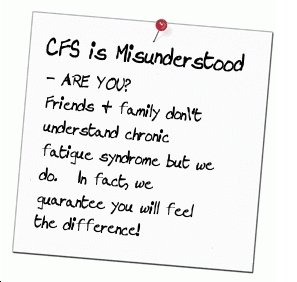Diagnosing Celiac Disease
Celiac disease is a known disease of the small intestine. With celiac disease, the intestine experiences an immunological or allergic reaction. The small intestine does not absorb the nutrients of the food digested. This leads to nutritional, vitamin and mineral deficiencies. Diagnosing celiac disease early is very important to prevent any critical illness.
Celiac disease is common in European countries, particularly in Ireland, Italy, Sweden and Austria. In Finland, the prevalence may be as high as one in every 100 persons. While in North America, its prevalence is one in every 3000 people. Worldwide, its occurrence would be one in every 250 people.
Its exact cause is unknown but it is often inherited. If someone in the immediate family has it, chances are 5 percent to 15 percent that the member of the family may have it as well.
It can occur at any age, although problems don't appear until gluten is introduced into the diet.
There are also times, for unclear reasons, that the disease appear or was experienced after some form of trauma. It can happen or emerge after an infection, a physical injury, the stress of pregnancy, severe stress or surgery.
There are no typical signs and symptoms of celiac disease and there are even patients that have no symptoms. They only show the symptoms after inducing or introducing gluten into their diet. There are cases that celiac disease is misdiagnosed or undiagnosed. The symptoms are often confused with other conditions, like irritable bowel syndrome, gastric ulcers, or nervous conditions.
Blood tests are conducted such as anti-tissue translutaminase and anti-endomysial antibodies. Blood tests are used to find the elevated antibody levels. These elevated levels are a sign of celiac disease, since the person?s immune system recognizes gluten as a foreign substance and increases the number of antibodies to fight it.
After confirming or getting elevated antibody levels in the blood tests, the doctor or attending physician perform intestinal tissue checks. This is to microscopically examine a small portion of intestinal tissue to check for damage to the villi.
A thin, flexible tube is inserted through the mouth, esophagus and stomach and into the small intestine to take a small tissue sample. The tiny, hairlike projections from the small intestine that absorb vitamins, minerals and other nutrients will provide the necessary information if the villi is damaged.
Also, patients with celiac disease show other clues. Patients may have the presence of a blistering, itchy skin rash known as dermatitis herpetiformis. An estimated 10 percent of patients with celiac disease also have this skin disorder. Dermatitis herpetiformis is a skin disease that can be found on the extremities, buttocks, neck, trunk, and scalp.
After undergoing medical examinations, a trial of a gluten-free diet can confirm the diagnosis. But before undergoing the gluten-free diet, medical evaluation is required. Undergoing the diet may have an impact on the results of the blood test and biopsies. They may appear normal and without any complications even if the patient is positive with celiac disease.
Dennis Lee, M.D, the author of the article "Celiac Disease(Gluten Enteropathy)" states that it is necessary to firmly establish the diagnosis of celiac disease before commencing to gluten free diet for three main reasons:
(1) to identify the gluten-free diet should be followed which is a life-long and tedious commitment;
(2) to avoid patients with irritable bowel syndrome (IBS) to unnecessarily commit to life-long gluten restriction; and
(3) a gluten free diet can lower the blood antibody levels and allow the small intestine to lose the typical appearance of celiac disease, complicating subsequent efforts at making a firm diagnosis of celiac disease.
In addition to these medical measure a lot of people find that using a Herbalife nutrition program can have a very significant impact on rebuilding the bodies ability to digest food. Many individuals report that after using such a nutrition program their symptoms of Ceclic's disease significantly reduce or disappear all together.
Some people find these results in amazingly quick times, like 7 to 10 days, while others experience significant improvement over a 30 to 90 day period.
The truth about Celiac Disease
People that have been diagnosed with this condition probably already know all things about it. But for those around them that do not understand, celiac disease is a condition that affects the digestive system. More specifically, it is a condition that is set off by eating foods with protein gluten.
The truth about celiac disease is that no treatment exists and those who claim otherwise should be taken with caution and skepticism. The disease is also known as celiac sprue or gluten-sensitive enteropathy.
The disease can affect a person at any age. Children and adults alike have the chance to develop the disease. It is an autoimmune disorder which targets the digestive system.
Like mentioned earlier, it is triggered by eating foods that are rich with gluten like cereal grains, bread, pasta, pizza crust, and even cookies. Any food that is made from wheat barley or rye most likely contains a good amount of gluten. When food with gluten is ingested, a reaction occurs in the small intestine which causes damage to its inner lining.
The small intestine also becomes incapable of absorbing nutrients. This, of course, will become problematic in the long run since the necessary nutrients are not absorbed which can result to other illnesses. The threat of nutrition deficiency is higher in children who have contracted the disease.
The exact cause of celiac disease is unknown, but it's often inherited. If someone in your immediate family has it, chances are 5 percent to 15 percent that you may as well. It can occur at any age, although problems don't appear until gluten is introduced into the diet.
The exact reason why the lining is being damaged is still unknown. Previously, it was thought that the disease only affects Europeans. But recent studies show that celiac disease affects different people regardless of ethnic background. In the US it has been found out that one in every 133 have it. According to research, the disease is genetic in origin.
The disease can be mistaken as other allergic reactions for the signs and symptoms are not that apparent. It is a common thing that people with the disease find themselves experiencing intermittent diarrhea, bloating, gastric ulcers, mouth sores, skin rash, anemia, upset stomach, joint pain and some abdominal pain.
However, there are times that people don't experience any kinds of digestive problems at all. Nevertheless, people with celiac disease will result to weight loss, diarrhea, stomach pains, foul smelling stools, and osteoporosis.
The disease may arise from different reasons. Sometimes, trauma, an infection, a physical injury, or the stress from pregnancy can cause the disease. There are some documented cases where severe stress or even surgery can trigger the disease.
Treatment for celiac disease has yet to be discovered. Nonetheless, there are ways to combat the disease. And the first line of defense is a gluten free diet. Avoiding foods with gluten will help prevent any inflammation of the small intestines. You can start taking nutritional supplements to help your malnutrition caused by the disease.
A gluten free diet includes eating the right amounts of fresh meat, fish and poultry, dairy products, fruits and of course vegetables. Your dietary options are not as limited as you might have early thought it would be. Rica and potatoes are also a good replacement for wheat products. Learning the truth about celiac disease should not be approached as something scare but rather should be treated as an opportunity to get to know the disease and the right way of approaching it.
the A to Z directory of dealing with Health Problems & Self Care Strategies for natural remedies to your health issues.

Subscribe to ?Your Health Success? newsletter
Terms of Use | Privacy Policy |Disclaimer | Free Health Book|Contact Us

the A to Z directory of dealing with Health Problems & Self Care Strategies for natural remedies to your health issues.

Subscribe to get your weekly "Health Success Magazine" with a new complete & comprehensive Health Report in every edition!

to “Your Health Success”
our weekly F’R’E’E’ Newsletter
If you would like a free no-obligation private consultation or to contact Warren Tattersall for more information, please click here >> Contact Us

Click the books above to learn more about how we treat CFS naturally, to get your life back!
You will find many assorted Health Reports available for download free to you on this website!
Our free Health Success Reports are each available for you to download when you subscribe to receive them and their 7 part eCourse.
You can unsubscribe at any time, but we are sure you will want to receive all the email lessons of these informative ecourses.
Read more HERE to select the REPORT subjects of most interest (or concern) to you.









